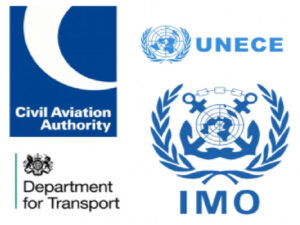Introduction
In industries dealing with hazardous materials, mastering emergency protocols and responding swiftly and effectively in emergencies is not just a recommended skill; it’s a critical necessity. Hazardous material training, which often goes beyond routine procedures, places a significant emphasis on mastering emergency response protocols. This blog aims to shed light on the importance of this mastery, exploring its key components, the industry-specific challenges it addresses and its indispensable role in ensuring a safe and resilient working environment.
The Significance of Emergency Protocol Mastery
Rapid Response Saves Lives
In hazardous material incidents, time is of the essence. Mastering emergency protocols ensures a swift and coordinated response, minimising the potential for injuries and fatalities. Lives are saved, and the severity of the incident is reduced through prompt and effective action.
Environmental Protection
Hazardous material spills can have devastating environmental consequences. Proficient emergency response protocols aim to contain and mitigate the impact on ecosystems. Minimised environmental damage fosters sustainability and compliance with regulatory standards.
Asset Protection
Effective emergency response safeguards valuable assets, including equipment, infrastructure and facilities. Reduced property damage and financial losses ensure the continuity of operations and preserve organisational resources.
Components of Mastering Emergency Protocols
Rigorous Training Programmes
Thorough and ongoing training programmes that simulate realistic emergency scenarios enhance the skills and preparedness of personnel, ensuring they can apply their training effectively in high-pressure situations.
Comprehensive Risk Assessments
Identifying potential hazards and assessing their severity tailor emergency protocols accordingly. This approach ensures targeted and specific emergency response strategies that address the unique risks associated with the materials being handled.
Clear Communication Strategies
Establishing robust communication channels and protocols ensures seamless coordination during emergencies, preventing confusion, facilitating quick decision-making, and enhancing overall response efficiency.
Specialised Equipment Familiarisation
Ensuring personnel are trained in the proper use of specialised equipment, such as personal protective gear and spill containment tools, maximises the effectiveness of emergency response efforts and minimises the risk of equipment-related errors.
Industry-Specific Challenges
Manufacturing and Chemical Industries
Dealing with diverse and complex chemicals that require specialised handling during emergencies necessitates tailored emergency response protocols addressing chemical reactions, spills and exposure scenarios.
Transportation and Logistics
Hazards associated with the transportation of dangerous goods, including accidents during transit, pose challenges that can be addressed with scenario-based training for quick and effective responses to incidents like spills, leaks or accidents during transportation.
Construction and Demolition
Potential exposure to hazardous substances during demolition and construction activities is a unique challenge that can be tackled with emergency protocols addressing unexpected encounters with hazardous materials, emphasising swift evacuation and containment.
Healthcare and Laboratories
Handling and disposing of medical and laboratory waste, including hazardous chemicals, poses challenges that can be met with specialised training for healthcare professionals to respond to spills, exposure incidents and emergencies involving biohazardous materials.
Real-Life Scenario Simulations
Simulated Spill Response
Simulating a hazardous material spill to assess the team’s ability to contain and clean up the incident identifies weaknesses in spill response procedures and refines protocols for improved effectiveness.
Chemical Exposure Simulation
Simulating a scenario where personnel are exposed to hazardous chemicals to test the efficacy of decontamination and medical response protocols ensures that medical and decontamination procedures are executed swiftly and accurately.
Transportation Accident Response
Simulating an accident involving the transportation of hazardous materials to assess the coordination and response capabilities of personnel identifies areas for improvement in transportation-related emergency protocols, including evacuation and containment procedures.
Facility Evacuation Drill
Conducting an evacuation drill to assess the efficiency of emergency evacuation procedures identifies bottlenecks and weaknesses in evacuation plans, ensuring a smooth and swift evacuation in real emergencies.
Continuous Improvement and Learning
Post-Incident Analysis
Conducting thorough analyses of emergency responses after incidents or drills identifies areas for improvement, learns from successes and mistakes and continuously refines emergency protocols.
Feedback and Communication
Establishing a feedback loop for personnel involved in emergency response efforts encourages open communication, fosters a culture of continuous improvement and ensures that lessons learned are applied in future scenarios.
Regular Scenario Updates
Updating and diversifying simulated scenarios to keep emergency response teams challenged ensures that personnel are well-prepared for a variety of emergency situations, fostering adaptability and resilience.
Conclusion
Mastering emergency protocols in hazardous material training is not a one-time task but an ongoing commitment to preparedness and safety. A robust training programme, comprehensive risk assessments and industry-specific scenario simulations are crucial components in ensuring effective emergency response capabilities.
Continuous improvement, real-life scenario simulations and a commitment to learning from every incident or drill contribute to the mastery of emergency protocols. In a landscape where the unexpected is a constant, the ability to respond swiftly, effectively and with precision can make all the difference. Hazardous material training, particularly in mastering emergency protocols, becomes the cornerstone of creating a safer, more resilient and well-prepared workforce in industries where the stakes are high and the margin for error is minimal.
We are experts in emergency protocols surrounding hazardous materials. Our aim is to provide interactive dangerous goods training that builds confidence in new skills and knowledge in all attendees. Call us to discuss your training needs on 0330 912 5041 or email us at [email protected].




